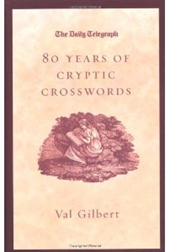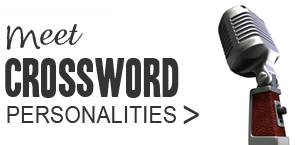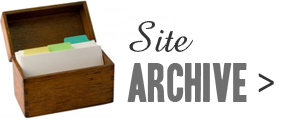The Daily Telegraph: 80 Years of Cryptic Crosswords was published in celebration of the Telegraph crossword's completing eighty years of publication. Beautifully packaged in hardbound cover, this is a true collector's item.
Not being a regular Telegraph crossword solver, I might have given this book a miss had a thoughtful friend not gifted it to me. I am glad I got to read it.
The book contains 80 crosswords in all, one to represent each year of the Daily Telegraph crossword's existence during 1925-2005. Interspersed with the crosswords is a narrative by Val Gilbert, editor of The Daily Telegraph crossword for thirty years till her retirement in 2006.
The book is organized into sections decade-wise, starting with 1925, the year when the first Daily Telegraph crossword was published. Each section has its own preface – this is the part I most enjoyed: Val Gilbert ties together news of the decade with changes within the Daily Telegraph setting team, evolution of the crossword's style and popularity, anecdotes and personal reflections on these matters in amusing ways.
Sample an excerpt from 1945-54:
…civil servants, like compilers, were developing a language all their own. In the post-war years there was an outbreak of officialese that could verge on the incomprehensible. The only similarity between a good cryptic clue and official gobbledygook (as it came to be called) is that both challenge the reader to make sense of it, the main difference being that that the good clue does it with wit!
We follow the progression of the cryptic crossword through the economic depression of 1929, the World Wars I and II, the advent of crossword software, 9/11 and beyond – and marvel at the influence of external climate on our pastime. In the chapters about the early decades, the narrative does an additional job of warning solvers of the rawness of cryptic technique. The first-ever Telegraph crossword of 30 July 1925 looks nothing like the cryptic crosswords of today. Those were the days when clues like "A muddled life" = ILFE made it to print, two-letter words were accepted, definitions and indicators could be missing.
Each crossword is captioned with a news headline from the day it appeared in print. I'm not sure if the choice of the crossword was made according to its quality or the significance of its date of publication. In any case, those 80 headlines give an interesting, if highly subjective, sketch of the world's recent history. [Since the book is by a British author for a primarily British audience, I will not dwell on the point of choosing only these two events related to India as captions: Partition of India announced (3 June 1947) and India attacks Pakistan (6 September 1965).]
The most riveting parts of the book are the anecdotes. The famous case of the coded D-Day crosswords is demystified, and there are others I hadn't heard about before – a woman who left her will scrawled on a crossword; a rich man, full of disbelief over the superfast solving times claimed by people, who issued a challenge to solvers to finish a puzzle publicly in 12 minutes. Then there are illuminating behind-the-scenes insights: technological advancements change the process of typesetting and compiling post-1985; the appearance of the crossword in the paper is affected by cost-cutting measures in 1939 - and a bomb scare in 1992!
Also fun are the tongue-in-cheek references to the Times crossword. The Telegraph makes it a point to rub in their seniority:
In January 1930, The Times finally succumbed and published its first crossword puzzle. Meanwhile The Daily Telegraph compilers, with their five-year lead, were now exploiting to the full the double meaning and the illusory pun.
…and take credit for their editor's prowess :)
In January 2003, Richard Browne’s last puzzle appeared in The Daily Telegraph - he had been appointed crossword editor to the Times (trouble is, of course, that the Telegraph trains them so well!).
The crosswords themselves aren't uniformly entertaining. I enjoyed the ones from the last decade, and tried one or two each from the previous decades but didn't feel enthusiastic enough to attempt all. Many of the clues aren't fair enough by the standards we follow today, and though that didn't interfere with my enjoyment of Afrit's work, here the older puzzles didn't click for me.
The final puzzle in this book is a special one, and pretty good – the crossword is made of clues sent in by solvers. This was published on 30 July 2005, the 80th anniversary of the Telegraph crossword.
I had expected bigger biographies about the crossword setters; surely they deserved more space in a book celebrating their creations? I now find that Val Gilbert has devoted a separate book for the setters: A Display Of Lights (9): The Lives and Puzzles of the Telegraph's Six Greatest Cryptic Crossword Setters.
Looking at the interactivity the Telegraph encourages with its readers, I am not surprised at the enormous popularity of their crossword. I dare any Hindu crossword solver not to feel a pang of envy on reading these words by the Telegraph crossword editor (p.194), about their search for a new crossword compiler:
Six new compilers were used in as many weeks and solvers were invited to assess the puzzles that appeared during this time. Not that the Telegraph solvers have been backward in informing the paper what they thought of its puzzles. But in this case, I was actively asking their opinion.
Related Posts:
If you wish to keep track of further articles on Crossword Unclued, you can subscribe to it in a reader via RSS Feed. You can also subscribe by email and have articles delivered to your inbox, or follow me on twitter to get notified of new links.







5 comments
Not the Telegraph solvers have beer been backward in informing the paper what they thought of its puzzles.
Typo, or some wordplay involving beer?
I am definitely envious, and with reason. Forget pro active soliciting, with TH even subsequently noticed instances of inadequacy are responded by a studied silence.
Typo, of course :) Fixed now, thanks.
A good critique on this unique collectors book. I showed this book to Col Deepak Gopinath when he visited me in my home in Coimbatore. I remember mentioning in one of my earlier blogs in the HCC that I possess this book as one of the items in my memorabilia. What appealed to me most is its sepia-tinted cover and the collation of the decades events to the evolution of cryptic crosswords.
It is a pity that you don't get to solve them regularly in India unless one went online.The cryptic crosswords of DT appear in the Daily Nation in Kenya, and I unashamedly always ask my friends visiting India from either UK or Kenya to bring some cuttings for me. They oblige.I just completed around 200 of the DT crosswords from amongst my collections of unsolved ones and I can say with certainty that the compilers are absolutely above board in their choice of clues, cluing and innovation of lights.
A few of my friends in Kenya , settlers from UK, had recalled nostalgically the events depicted in the book, decade wise. I agree that a few of those crosswords appearing are not up to scratch.
All in all, Shuchi , you have done a great service to all solvers of cryptic crosswords by bringing this book to their notice. Those who can, must buy, possess and cherish its value on their bookshelves.
The Daily Telegraph crossword was being reproduced in the Indian paper The Pioneer.
It is many years since I saw the paper and so I don't know if it still carries the same crossword.
The Daily Telegraph CW is being reproduced in The Telegraph (published from Kolkata) around five months after publication in in DT. These Cryptic CWs are solved daily by a band of dedicated solvers at the Orkut site - Crosswordmania.
Post a Comment